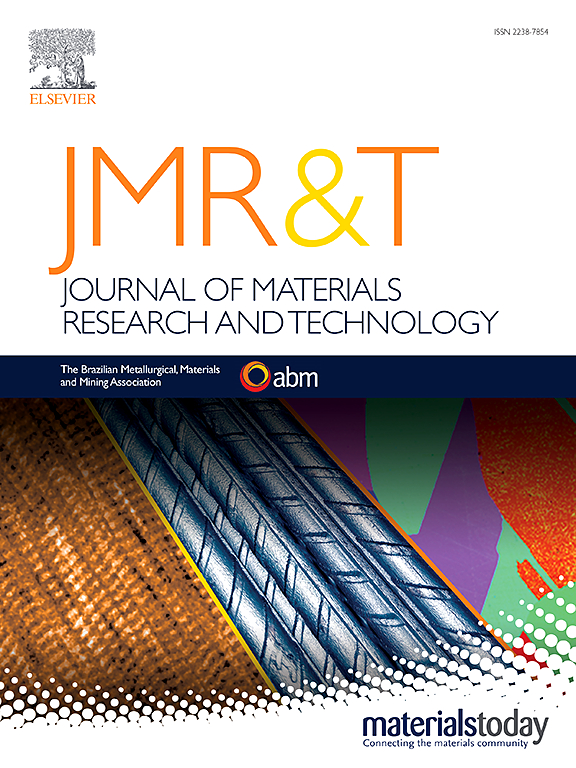残余纳米孪晶对竹状结构铜线电迁移的影响
IF 6.6
2区 材料科学
Q1 MATERIALS SCIENCE, MULTIDISCIPLINARY
Journal of Materials Research and Technology-Jmr&t
Pub Date : 2025-06-11
DOI:10.1016/j.jmrt.2025.06.076
引用次数: 0
摘要
电迁移(EM)带来了重大的可靠性挑战,特别是随着铜再分配线(rdl)的线/空间(L/S)不断缩小。本文研究了竹状(BL)结构铜线在纳米孪晶和非纳米孪晶条件下的EM寿命可靠性。电磁测试在高电流密度(1.0 × 106 a /cm2)下,在环境空气中低温(150°C)下进行。结果表明,与BL-Cu相比,BL- nt -Cu纳米孪晶线具有致密的孪晶边界(孪晶间距= 108 nm)、高的(111)取向晶粒比例(64%)和较低的氧化速率(0.04 nm/h),从而提高了耐电磁性能。结果表明,BL-NT-Cu系的电磁寿命(T50 = 3551 h)明显长于BL-Cu系(T50 = 779 h)。该研究强调了BL-NT-Cu结构设计在提高精细L/S cu - rdl的EM可靠性方面的潜力,为开发高密度、高性能的先进封装应用提供了可行的策略。本文章由计算机程序翻译,如有差异,请以英文原文为准。
Effect of residual nanotwin on electromigration in copper lines with bamboo-like structures
Electromigration (EM) poses significant reliability challenges, especially as the line/space (L/S) of Cu redistribution lines (RDLs) continues to scale down. This study investigates the EM lifetime reliability of bamboo-like (BL) structure Cu lines with and without nanotwins. EM tests were conducted under a high current density (1.0 × 106 A/cm2) at a low temperature (150 °C) in ambient air. The results show that BL nanotwinned Cu (BL-NT-Cu) lines exhibited densely packed twin boundaries (twin spacing = 108 nm), a high fraction of (111)-oriented grains (64 %), and a lower oxidation rate (0.04 nm/h) compared to BL-Cu lines, which contributed to enhanced EM resistance. It was found that BL-NT-Cu lines had a significantly longer EM lifetime (T50 = 3551 h) than BL-Cu lines (T50 = 779 h). The study highlights the potential of the BL-NT-Cu structural design in improving the EM reliability of fine L/S Cu-RDLs, offering a viable strategy for developing high-density, high-performance advanced packaging applications.
求助全文
通过发布文献求助,成功后即可免费获取论文全文。
去求助
来源期刊

Journal of Materials Research and Technology-Jmr&t
Materials Science-Metals and Alloys
CiteScore
8.80
自引率
9.40%
发文量
1877
审稿时长
35 days
期刊介绍:
The Journal of Materials Research and Technology is a publication of ABM - Brazilian Metallurgical, Materials and Mining Association - and publishes four issues per year also with a free version online (www.jmrt.com.br). The journal provides an international medium for the publication of theoretical and experimental studies related to Metallurgy, Materials and Minerals research and technology. Appropriate submissions to the Journal of Materials Research and Technology should include scientific and/or engineering factors which affect processes and products in the Metallurgy, Materials and Mining areas.
 求助内容:
求助内容: 应助结果提醒方式:
应助结果提醒方式:


